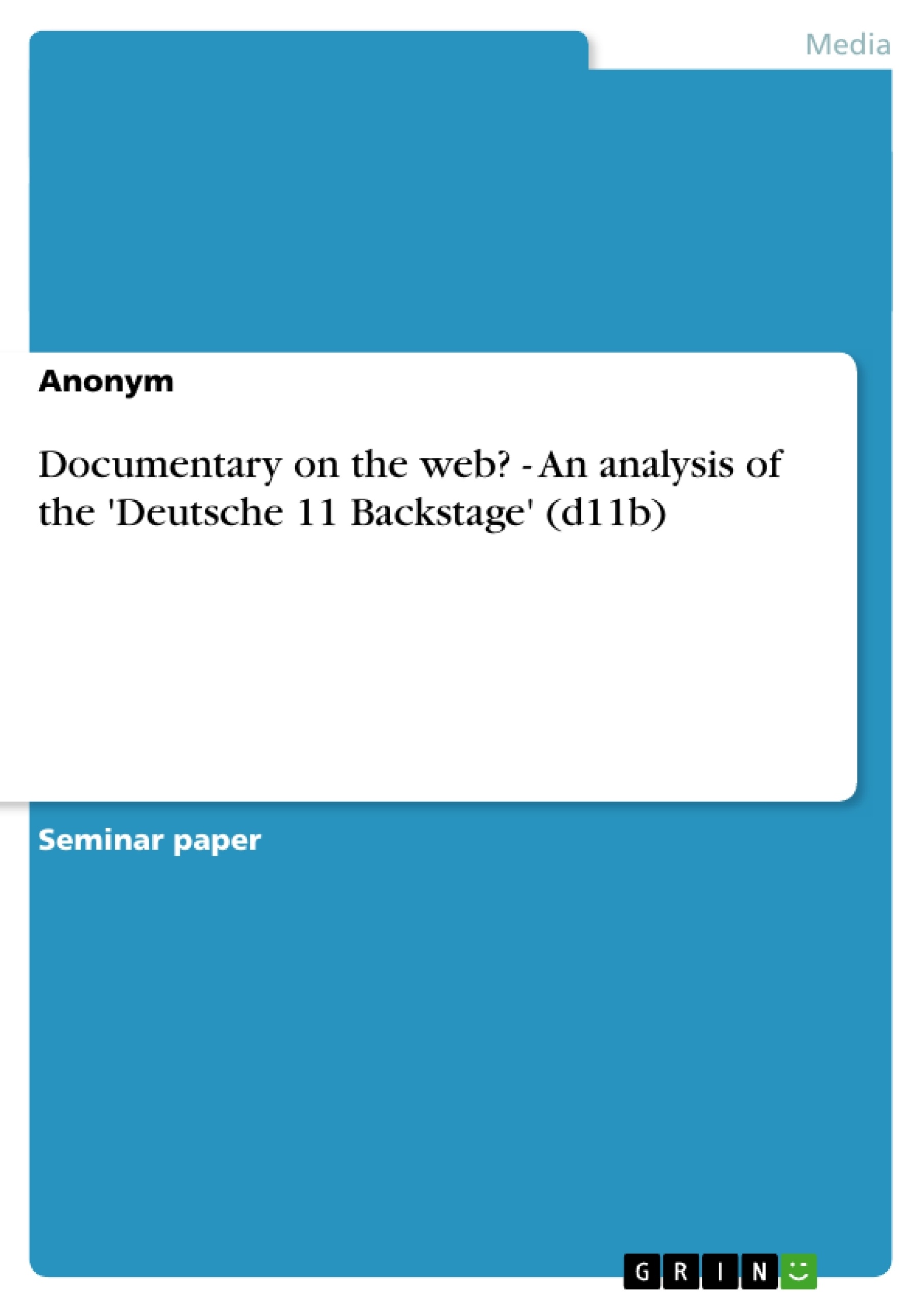Which football fan or national team supporter is not dreaming of being as close to his or her favourite team as possible? Who would not want to be a mouse in the locker room and watch how the coach gives your favourite players an energetic pep talk. This dream can be fulfilled by the web spots ´Die Deutsche 11 Backstage` (d11b), which is a humorous account of the events happening behind the scenes of the German national team before, during and after the 2006 world cup. In this animated and creative version of Sönke Wortmann`s documentary Deutschland – Ein Sommermärchen (ARD, 2006), the enthusiastic team kicks footballs, makes jokes and drinks beer while coach Klinsmann aka ´Klinsi` is trying to motivate them in the locker room or even via web cam from his residence in the US. The name of the show, which is only available on the web or on DVD, is an allusion to the German Football Association dfb. The show was created by two football fans and animation producers who put it on their business website and caused a big fan base to emerge. Picked up by television and other media, the show became very popular. Thereby, it profited from the generally increasing popularity of German football immediately after the world cup.
Inhaltsverzeichnis (Table of Contents)
- Introduction
- Format and Genre
- 'Conventional Documentary'
- 'Unconventional Documentary'
- Discussion
- Conclusion
Zielsetzung und Themenschwerpunkte (Objectives and Key Themes)
This paper analyzes the web series 'Die Deutsche 11 Backstage' (d11b) by examining its format and genre in relation to the traditional television documentary. The aim is to understand how d11b's unconventional approach challenges existing genre categories and the role of the internet in shaping participatory cultural experiences.
- The unique format of d11b and its relationship to the television documentary.
- The interaction between fact and fiction in d11b and its impact on genre categorization.
- The relationship between producers and consumers in the context of web-based content.
- The role of the internet as a platform for participatory cultural experiences.
- The potential of web-based programming for promoting engagement and participation.
Zusammenfassung der Kapitel (Chapter Summaries)
The introduction provides an overview of the d11b series and its context. It outlines the main objectives and themes of the paper, highlighting the importance of analyzing the format and genre of d11b in relation to traditional television documentaries.
The 'Format and Genre' section explores the production and distribution of d11b, contrasting it with more traditional forms of documentary. It discusses the evolution of the d11b format and its connection to the television documentary, emphasizing the role of the internet in shaping its creation and dissemination.
Schlüsselwörter (Keywords)
Key terms and concepts explored in the paper include: web-based documentary, animation, television documentary, genre, format, participatory culture, online fandom, d11b, 'Die Deutsche 11 Backstage', Deutschland – Ein Sommermärchen, Sönke Wortmann.
- Arbeit zitieren
- Anonym (Autor:in), 2007, Documentary on the web? - An analysis of the 'Deutsche 11 Backstage' (d11b), München, GRIN Verlag, https://www.grin.com/document/78213



